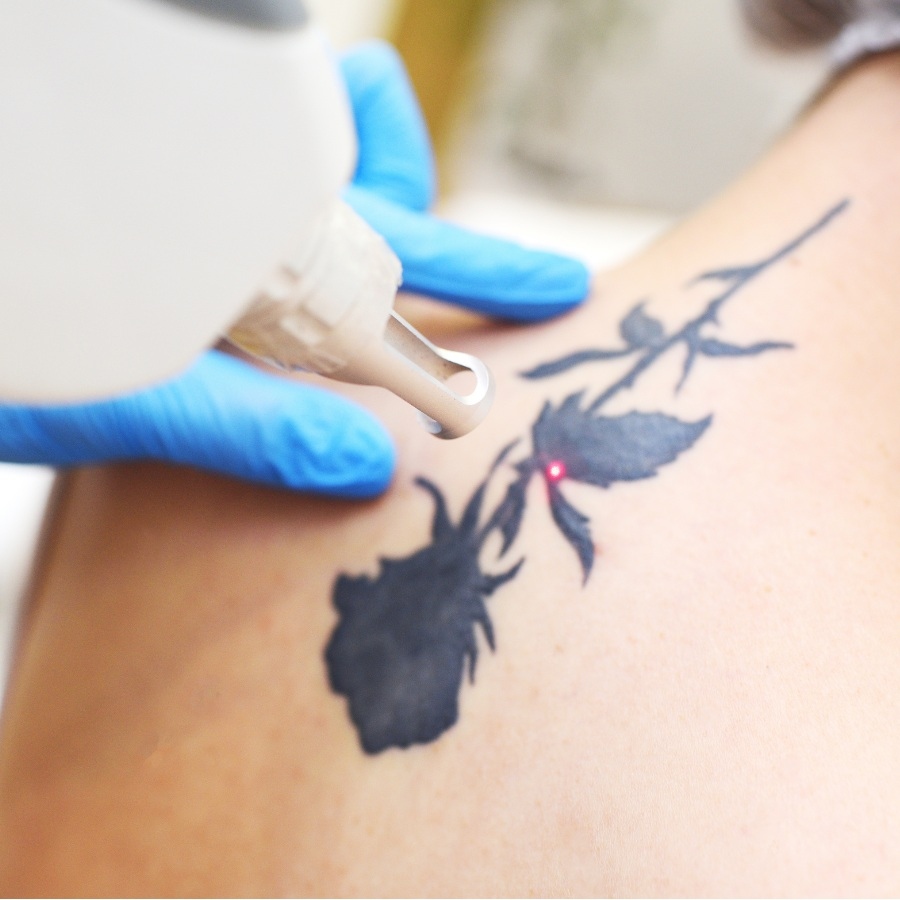Laser Tattoo Removal Treatment Overview
Body modifications, especially tattooing, have been widely accepted in modern society as an expression of individuality and a form of art. In a Statista survey conducted in 2019, more than a quarter of the population in the United States is adorned with at least one tattoo.
But apparently, many people get tattoos they regret later. Take for example those who are having difficulty securing employment in a company that does not allow visible tattoos, had a relationship breakup or made a bad decision when they were young. On the flip side, others simply want a change and make way for newer designs.
And this unsurprising trend has given rise to a boom in supply and demand for professional laser tattoo removal services in medical spas, clinics, salons, and even tattoo shops. Today, laser tattoo removal is the most sought-after treatment for eliminating unwanted body ink and for all good reasons.
In this section, we listed the frequently asked questions about laser tattoo removal. Needless to say, the initial consultation is an invaluable part of creating patient-centered care. Aside from obtaining a preoperative history, it is also an opportunity to build rapport, mutual trust, and authority in your market. Communicating effectively with patients and discussing these topics can make a difference in delivering quality care and accomplishing better outcomes.
What Is Laser Tattoo Removal Treatment?
Laser tattoo removal is a non-surgical procedure that utilizes high-intensity pulsed beam lights that penetrate the skin. Specifically, it targets the pigment colors and the dermis or the skin layer between the epidermis and subcutaneous tissues.
During the procedure, the practitioner uses a machine that passes laser light into the skin. Quick pulses of light energy with specific wavelengths are generated, which then permeate the skin to begin the process of tattoo removal. The heat produced microscopically blasts the tattoo ink into smaller particles. Over the course of the treatment, the lymphatic system flushes the tattoo ink fragments naturally, fading the appearance of the tattoo.
Does Laser Tattoo Removal Work?
This is probably the first question most patients would ask when they are planning to have their tattoos removed. And the straightforward answer is: Yes. Laser tattoo removal works. Results may vary from person to person, but usually, the desired results are seen after multiple sessions. Because the procedure only uses lasers, it is considered the safest and most effective method as it only targets a localized area and does not affect the surrounding skin.
Laser Tattoo Removal Results
With advances in technology in recent years, the outcome of laser tattoo removal has become more positive, resulting in the reduction of adverse effects and increased efficacy.
The success of the treatment depends on the tattoo itself. The dyes used and level of penetration are two major considerations. This is why documenting patients’ care by taking photographs of the treated area for future comparison is imperative. In most cases, laser removal showed a significant reduction of tattoo pigment, overall improvement in skin pigmentation, and the absence of permanent atrophic and hypertrophic scars.
How Often to Get Laser Tattoo Removal Treatment?
It is necessary to assess the patient’s skin carefully to determine the ideal treatment plan. Usually, each session will be scheduled six to eight weeks apart to allow the skin enough time to heal and prevent any untoward effects.
What Are The Side Effects Of Laser Tattoo Removal? Does it hurt?
People who want to have their tattoos erased should expect varying levels of discomfort and this should be explained during the initial consultation. Depending on the patient’s pain tolerance, the procedure might feel the same as getting a tattoo for some, while others could liken it to the feeling of a rubber band being snapped against the skin.
Topical anesthesia or local injection with lidocaine can be applied thirty minutes prior to treatment to make it as tolerable as possible. Make sure to discuss this in detail with your patients so they will not feel anxious the next day, especially when they see the following side effects:
- Erythema, or redness of the skin
- Edema, or swelling at the treatment site
- Tenderness when the affected area is touched
- Scabbing, bruising, and blistering pos-treatment
- Pigmentary alterations such as hyperpigmentation and hypopigmentation
How Many Laser Tattoo Removal Treatments are Needed?
It is important to note the five types of tattoos: amateur, professional, cosmetic, medicinal, and traumatic. Amateur tattoo made in one color requires fewer treatment sessions than professional tattoos with vibrant hues. Typically, six to twelve laser tattoo removal treatments are required to see drastic changes.
When discussing the treatment timeline with the patient, the Kirby-Desai scale can help you do exactly just that. This predictive scale is an excellent tool in assessing patients and determining the number of treatments a tattoo will need for removal and examines the following elements:
- Fitzpatrick skin type
- Tattoo placement
- Ink colors
- Amount of ink
- Layering
- Scarring and tissue changes
How Long Does It Take To See Results From Laser Tattoo Removal?
Removal of tattoos is an individualized process. The length of the treatment plan is based on a variety of factors. Given the time in between each session, results start showing a few months after the procedure starts. Simply put, some patients may begin to see their ink fading after three to four appointments, while others require as many as fifteen. For a tattoo that covers a large surface of the skin, the treatment plan may be longer.
What Is The After-Care For Laser Tattoo Removal?
Proper aftercare prevents infection and minimizes the risk of adverse side effects. To get the best results, we recommend handing out a detailed instructions sheet that contains the following aftercare tips, to serve as a guide for patients after the treatment:
- Keep the treated area clean and dry. Wash it gently with mild soap and water. For the first three days following treatment, apply an antibiotic ointment and cover the treated area with a bandage. Make sure to replace the bandage at least three times during that duration.
- Any water activities that involve soaking the treated area, such as swimming, baths, and pools must be avoided until the scab has fallen off. Taking a shower is allowed as long as the treated area is not being hit by high-pressure water.
- Scabbing and blistering are common side effects of the procedure. Never pick or pop any scabs or blisters. Doing this will put you at risk for infection and scarring. Let it fall off on its own and continue applying the antibiotic ointment as directed.
- Patients may begin to notice swelling and itchiness. Do not scratch the skin. Applying a cold compress or a soothing ointment can help alleviate the discomfort.
- Patients may experience inflammation and pain. Take Acetaminophen as needed for pain relief. Avoid taking aspirin to minimize the risk of bruising and bleeding.
- Protect the treated area from sun exposure. Apply a sunblock of SPF 25 or higher for the first three months after the treated area has completely healed. Patients should also avoid tanning activities to avoid discoloration.
- Exercising immediately after the treatment is not recommended. Give the skin time to heal, usually around one to two days after each session, before resuming physical exercises. If blistering occurs, the wait should be longer, up to three days, or until the blisters completely healed.
- Watch closely for signs of infection. Patients should contact your office immediately if they experience fever, pus-filled blisters, and enlarged lymph nodes.
Laser Tattoo Removal Recovery Time
The estimated healing time after laser tattoo removal is within three to seven days. But, what the patient does during the downtime can increase or decrease the healing process. Recovery time is based on factors such as the type of treatment, the patient’s immune system, lifestyle considerations, and how closely the aftercare plan is implemented.
Laser Tattoo Removal Treatment Before & After
While each patient is unique, the desired results are based on several independent factors including the age and color of the tattoo, ink composition and density, depth of pigment insertion, and the patient’s skin type.
The images below are examples of body ink removed by Zemits technology. These are typical styles of tattoos that practitioners encounter in their clinics.
Laser Tattoo Removal Cost in the US
For a point of reference, the average laser tattoo removal treatment costs around $200 to $500. When developing a pricing model, it is important to create well-defined goals and benefits that make the most sense to you and your patients.
To figure out the right pricing for your practice, it will be worth it to do some research and benchmarking to analyze the local market and your competitors. Are there medical spas, dermatologists, and plastic surgeons in your area? Are tattoo shops also in the mix? If you offer better technology, office environment, location, and expertise, you can set competitive pricing and charge more for your services.
It is also essential to inform patients that laser tattoo removal takes multiple sessions. This way, you can make clear expectations and eliminate any confusion they may have about the total cost. To communicate this effectively, referring to tattoos in size categories per treatment is extremely beneficial. It will be much easier to understand and does not open up space for negotiation. Offering treatment packages is also a win-win situation that allows your patients to save money while your practice receives revenue upfront and guaranteed repeat visits.
How Long Is Laser Tattoo Removal Treatment?
A single session can last from ten to fifteen minutes, or up to an hour for larger tattoos. The size of the tattoo is an essential determinant of how long the session will last.
What To Expect After Laser Tattoo Removal Treatment?
The topical broad-spectrum antimicrobial ointment is applied immediately post-treatment. Although it may be alarming, it is imperative to explain to the patient that frosting is a completely normal post-treatment appearance. Frosting is the result of a chemical reaction that takes place when the laser reacts with the tattoo ink. It is caused by gas or plasma which rises to the surface of the skin, giving the appearance of white residue. It usually lasts from 15 to 30 minutes post-treatment and is a good indicator that the skin is functioning well to remove the pulverized ink particles.
Moreover, the frosting is evident in the initial few treatments. With subsequent treatments, there will be less pigment to treat, therefore, signs of frosting will be minimal. Swelling around the treated area is also a normal occurrence that usually subsides within a few hours after the procedure.
Professional Laser Tattoo Removal Equipment
Although tattoos were once considered permanent, it is now possible to remove them professionally with a laser machine. Read on to find out more about this innovative cosmetic device.
What Is Laser Tattoo Removal Equipment?
Laser tattoo removal machines are Q-switched operated equipment designed primarily for decomposing pigment clusters of tattoos.
Equipment varies greatly based on spot sizes and customizable settings to ensure the effective removal of tattoos. Some systems are ideal for a wide range of tattoos, while others are perfect for very specific pigments.
Two major considerations when buying professional laser tattoo removal equipment are peak power and wavelength. Laser machines with high peak power allow practitioners to perform the procedure at greater fluences to achieve desired results for increased patient satisfaction.
It is also important to consider the wavelength to guide your choice of laser machine since different tattoos absorb different wavelengths of energy. This means practitioners will be able to switch between a variety of wavelengths of laser energy when treating tattoos.
The Zemits NDPrime features ideal wavelengths (532 nm and 1064 nm) to eliminate nearly all colors completely. This makes our machine a staple laser for any tattoo removal or laser clinic.
Types Of Laser Tattoo Removal Systems
Three types of short-pulsed, high-intensity and pigment-selective QS laser are currently used in the tattoo removal industry today: Nd:YAG, Ruby, and Alexandrite.
The Q-switched ruby and alexandrite lasers are ideal for removing black, blue, and green pigments. The Q-switched 532 nm Nd:YAG laser can be used specifically to remove red pigments and the 1064 nm Nd:YAG laser targets black and blue pigments.
The Nd:YAG laser, such as the Zemits NDPrime is the most popular choice among tattoo removal practitioners, because of its capability to produce the most versatile wavelengths: 532 nm and 1064 nm.
How Does Laser Tattoo Removal Machines Work?
Laser tattoo removal machines work by impaction and dissolution of tattoo pigments. The technology used for the procedure is called Q-switching, or quality switching. It is a mechanism used to control the light output by concentrating all the energy into intense bursts or series of pulses. The fragmented ink particles eventually lead to gradual fading and elimination of the tattoo pigments.
Laser devices that incorporate Q-switching are able to achieve selective photothermolysis. This microsurgery technique used to target tissue in a specific area can be applied in the setting of removal of the tattoo ink without harming the surrounding tissues. Because of the impressive predictability, excellent clinical results, and good safety profile, QS lasers are considered the gold standard for tattoo removal today.
The Zemits machine is an example of a Q-switched laser that utilizes ND-Yag laser beam and operating at 1064nm, and cutting-edge Quality Switched (also known as Q-switched) Nd-YAG laser beam operating at 532nm.
Laser Tattoo Removal Pros And Cons
As a laser tattoo removal specialist, it is essential to explain the benefits and harms of the treatment to your patients. Most people want to know all the details to address uncertainty. You can give narrative descriptions or figures, or both for greater understanding. Below are the pros and cons of the procedure:
Pros
- Relatively painless - Mild pain can be expected during the procedure, but most patients prefer to apply anesthetic cream at least thirty minutes prior to the treatment.
- Fewer side effects - Although it is a non-surgical procedure, laser tattoo removal carries risks but major side effects are very rare.
- Minimal recovery time - One advantage to laser technology is the minimal downtime. Patients can go back to their usual routine in a short amount of time, although they still have to follow the treatment regimen and aftercare diligently.
- High success rate - Laser tattoo removal has demonstrated impressive clinical results. With the cutting-edge technology and customizable settings of the laser machine, a wide range of skin issues and Fitzpatrick type can be treated and enable maximum results.
- Effective and permanent solution - In addition to the above benefits, laser tattoo removal is by far the safest, most effective way to erase tattoos without scarring. The results are permanent as long as the pigment beneath the skin breaks down sufficiently for the immune system to eliminate it.
Cons
- Risk for infection - As with any non-surgical cosmetic procedure, there are risks associated with laser tattoo removal. A proper aftercare regimen is crucial following the treatment to decrease the likelihood of infection.
- Adverse side effects - Although major side effects are rare, there is a possibility of skin discoloration such as hypopigmentation (white spots that are more common in darker skin) and hyperpigmentation (dark spots), and textural changes. It may also cause scarring when people neglect the treated area and paradoxical darkening of the tattoo which happens if the treated tattoo becomes darker instead of lighter.
- Cost - The treatment can be expensive, especially for larger tattoos that need multiple sessions and follow-ups. Be sure to discuss the payment options and offer competitive pricing for package discounts if you have one.
Benefits Of Laser Tattoo Removal Machine For Your Spa Business
If you own a spa business or plan to venture into this industry, the Zemits Q-switched technology for laser tattoo removal allows you to reap the following benefits:
- Maximize existing space - The space needed for a successful laser tattoo removal practice is minimal. Whether you are a healthcare practitioner, a seasoned businessman, or a budding entrepreneur, the Zemits NDPrime is very space-efficient and will fit right into any small treatment room.
- Expand your expertise - Laser tattoo removal is a perfect add-on procedure for healthcare practitioners and spa business owners wanting to upskill and diversify their skill set.
- Take advantage of the booming market - The market for laser tattoo removal is increasing rapidly each year. Tattoos have become a norm, but many people have outgrown the fad or regretted the spontaneous decision of getting one. For this reason, tattoo removal is in demand and is now becoming a popular cosmetic treatment.
- Increase revenue - Many patients are willing to pay a premium for a reputable laser practitioner. Laser tattoo removal usually costs $200 per session on average and requires multiple treatments (around five to ten). That’s around $1,000 to $2,000 per patient over a period of time!
- Cash pay - As a healthcare professional, you no longer have to deal with insurance claims. Although insurance does not cover tattoo removal, many patients are happy to pay to get rid of tattoos that no longer match their lifestyle.
Treatments You Can Perform With Laser Tattoo Removal Machine
A laser tattoo removal machine, in particular, the Zemits NDPrime, can be used in the following applications:
- Tattoo Removal - The Q-switched Nd:YAG generates energy in the following wavelengths for tattoo removal: 1064 nm and 532 nm. With this combination, the Zemits NdPrime can target a wide range of tattoo pigments including black, blue, red, brown, violet, green, orange, and yellow.
- Carbon Peeling - With the 1320 nm handpiece, you can perform a skin rejuvenation treatment known widely as the Hollywood Carbon Peel. It is a widely recognized carbon laser treatment that is used for reducing fine lines and wrinkles, improving skin tone and texture, refining pores, eliminating sun damage, and evening out acne scarring.
Instagram Hashtags for Laser Tattoo Removal Procedure
Instagram is just one of the popular platforms your business can use to draw patients in, generate new appointments, and convert new clients into lifelong customers. To help medical spa owners and aesthetic practice marketers, we listed the most popular hashtags within the niche:
#tattooremoval #tattoo #laser #lasertattoo #lasertattooremoval #lasertreatment #laserremoval #tattooregret #tattooremovalbeforeandafter #tattooremovalspecialists #medspa #dermatologist #doctorsofinstagram #lasertechnician #laserpractitioner #spabusiness #skincare #beforeandafter #transformation #guyswithtattoos #girlswithtattoos #inked #instatattoo #coverup
Summary
As the trend for getting inked increases, the demand for tattoo removal will similarly rise. Laser tattoo removal allows selective photothermolysis of tattoo pigment with minimal risk of scarring and other permanent pigmentary alteration. The number of sessions and healing time depend on factors such as the type of tattoo, size, location, age, and skin type of the patient.
Treatment should always begin by obtaining a preoperative history and informing the patient about the benefits, risks, side effects, cost, and other pertinent details of the procedure. Since treatment with the Q-switched laser may induce mild pain, use of topical anesthesia cream or a local injection with lidocaine may be used prior to laser treatment. Immediately after the procedure, topical broad-spectrum antibacterial ointment is applied. Strict compliance with the aftercare regimen should be encouraged to prevent infection of the treated area.
The type of laser machine and different techniques utilizing a combination of lasers contribute to the efficacy of the treatment. It is also largely dependent on the peak power, wavelength, and fluence of the laser used. The QS Nd:YAG laser such as the Zemits NDPrime, is the standard workhorse and established technology for red, blue, and black tattoos, with varying degrees of effectiveness. Aside from tattoo removal, the Zemits machine can also perform carbon peeling with the 1320 nm handpiece to address skin concerns such as wrinkles, enlarged pores, dull skin, and acne on the face and back.
Laser tattoo removal is a high-demand and easy-to-perform procedure that can add substantial value to spa businesses. Physicians, healthcare practitioners from a wide range of specialties, and entrepreneurs entering the market or seeking to diversify their offerings can turn to laser tattoo removal to revitalize their practice or cosmetic business.















